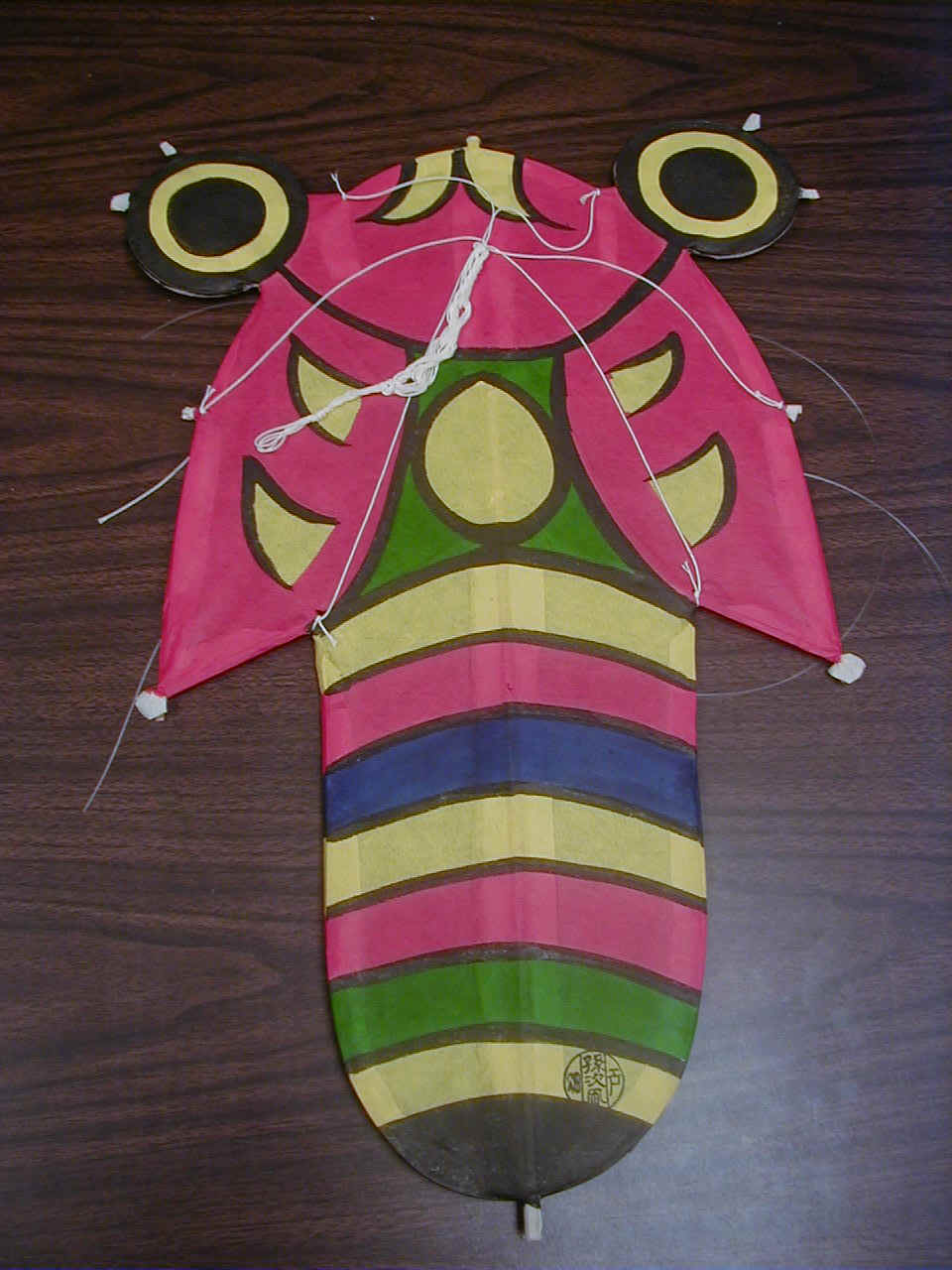|
 |
DESCRIPTION OF JAPANESE KITESThe kites of Japan are well known for their aeronautical and aesthetic worth. The traditional kite is a bamboo frame over which a boldly painted kite is glued. The motifs of the Japanese kite can range from legendary heroes to brightly geometric patterns. The kite, itself, can come in all sizes, ranging from one as small as a postage stamp to one as large as a three-story house. The kites you see on the wall represent some of the most popular motifs found in traditional Japanese kites.
|

























